The Role of Task Analysis in ABA Therapy Programs
Understanding Task Analysis in ABA Therapy
Introduction to Task Analysis
Applied Behavior Analysis (ABA) therapy has long been known for its efficacy in supporting individuals with Autism Spectrum Disorder (ASD). A key technique within this framework is task analysis, a method used to break down complex behaviors into smaller, manageable steps. This not only aids skill acquisition but also enhances a learner's independence and confidence. In this article, we delve into the nuances of task analysis, exploring its various methodologies, benefits, and practical applications in ABA therapy programs.
Fundamentals of Task Analysis in ABA
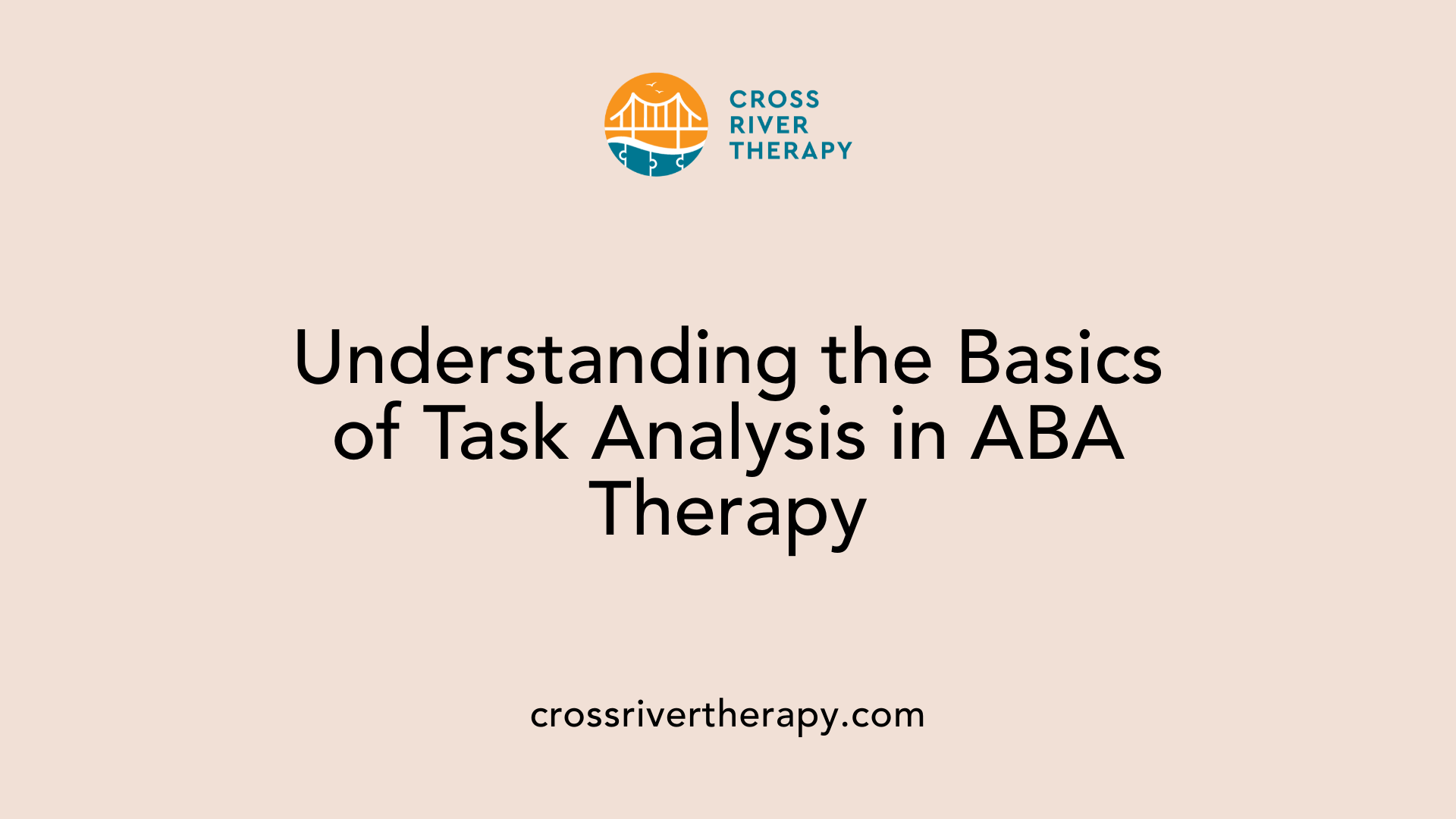
What is task analysis in ABA?
Task analysis in Applied Behavior Analysis (ABA) is a systematic method used to break down complex skills and activities into smaller, manageable steps. This approach is particularly beneficial for individuals on the autism spectrum, as it allows them to learn in a structured way that aligns with their unique needs.
The principles of task analysis focus on simplifying tasks, which reduces anxiety and frustration. Practitioners can tailor their instruction based on factors like age, skill level, and communication abilities. This individualized approach helps to ensure that learners can master each component of a task before moving on to the next.
What is the purpose of doing a task analysis in ABA?
The primary purpose of conducting a task analysis in ABA is to create clarity in task execution. By breaking tasks down into sequential steps, practitioners can clearly identify what actions are necessary to achieve a particular outcome. This organization enables more effective teaching methods and tailored interventions.
Using tools such as the Goals-Means Task Analysis (GMTA), therapists can establish the goals of instruction, identify steps involved, and review any necessary conditions for successful execution. This analysis not only enhances the learning process but also supports ongoing assessment of the strategies used, ensuring that learners receive the most effective support.
Methods to develop task analysis
Several methods can be employed to develop a task analysis:
- Observation: Watching individuals who successfully perform the task can provide insights into necessary steps.
- Expert Consultation: Engaging with specialists in specific skills can guide the development of clear task sequences.
- Instructor Performance: Practitioners can demonstrate tasks themselves as a model for learners.
- Trial and Error: Refining steps through practice allows adjustments based on individual learner feedback.
These methods collectively ensure an effective and personalized approach to teaching critical skills, ultimately helping individuals achieve independence in various tasks throughout their daily lives.
Overview of Task Analysis Techniques
When implementing task analysis within ABA therapy, educators often utilize specific chaining methods:
- Forward Chaining: Teaching starts with the first step, helping learners build on each successive component.
- Backward Chaining: This approach begins with the last step, reinforcing the completion of the overall task by connecting all parts together.
- Total Task Presentation: Here, learners engage with the entire task at once, promoting a holistic understanding and encouraging independent execution.
Using these methods not only aids in effective instruction but also facilitates accurate data collection on learners' progress and areas where further support may be needed.
Types of Task Analysis Methods
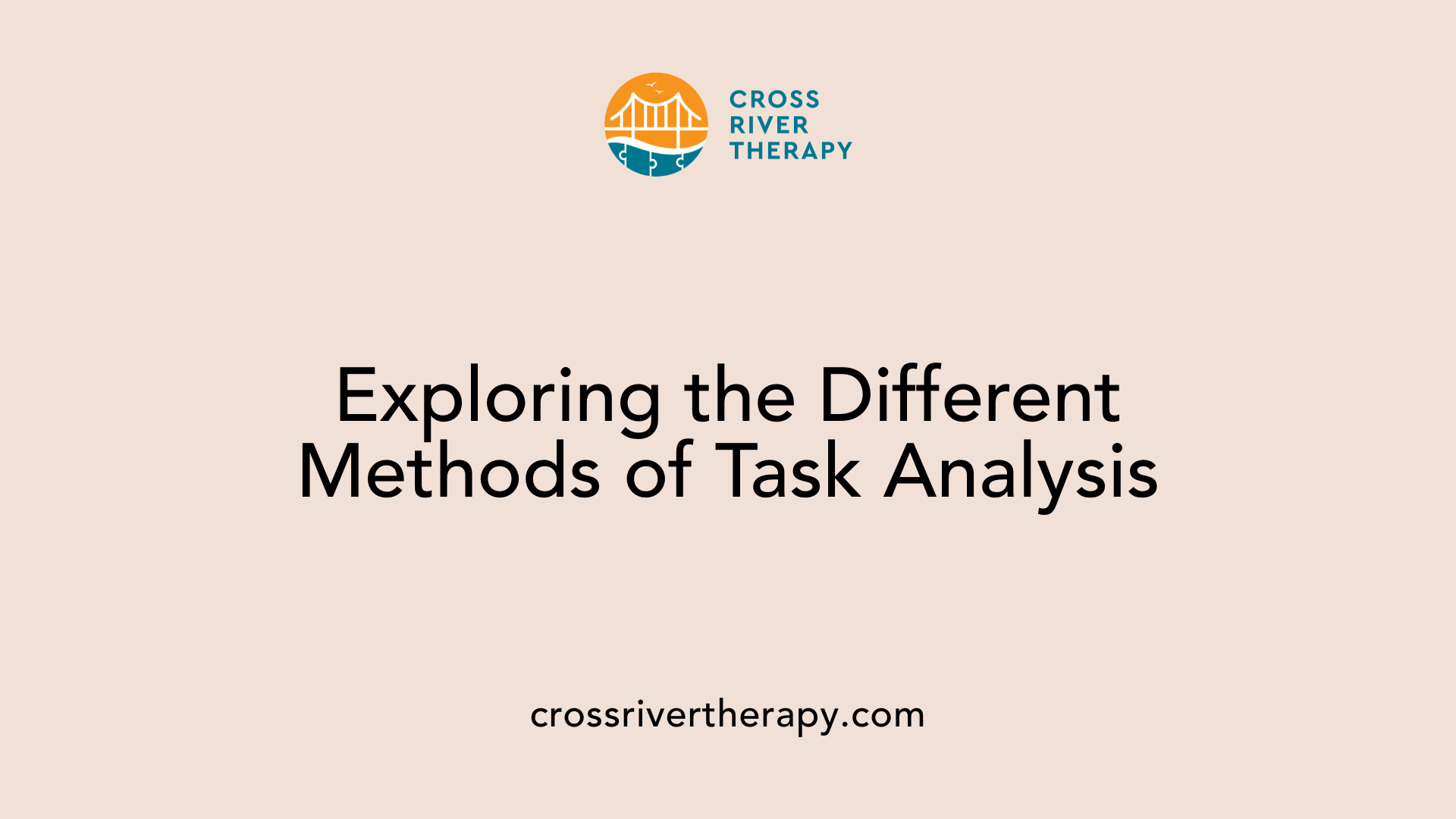
What are the types of task analysis used in ABA?
There are three primary types of task analysis used in Applied Behavior Analysis (ABA): forward chaining, backward chaining, and total task presentation. Task analysis involves breaking down complex skills into smaller, manageable steps, which facilitates learning, particularly for individuals with Autism Spectrum Disorder (ASD).
Forward Chaining
Forward chaining is an approach where instruction begins with the first step of the task. Each subsequent step is taught in sequence, allowing learners to master one component before moving on to the next. This method is effective as it builds confidence and instills a sense of accomplishment with each mastered step.
Backward Chaining
Conversely, backward chaining starts with the final step of the task. Teaching begins at the end, ensuring that learners see the immediate outcome of completing the task, which can enhance motivation. This method is particularly beneficial for fostering independence, as it enables learners to understand how each step contributes to achieving the final goal.
Total Task Presentation
Total task presentation engages learners with all aspects of a task at once. While learners work through the entire sequence, instructors provide support for any steps they find challenging. This method encourages a holistic understanding of the task, allowing for independent execution over time.
| Task Analysis Method | Description | Benefit |
|---|---|---|
| Forward Chaining | Starts from the first step and progresses forward | Builds confidence with each step mastered |
| Backward Chaining | Begins with the last step and moves backward | Clarifies the connection between steps and outcomes |
| Total Task Presentation | Engages with the complete task in one go | Fosters a comprehensive understanding and independence |
Each of these methods provides tailored instruction to meet the unique needs of learners, ensuring effective skill acquisition.
Benefits of Task Analysis for Individuals with ASD
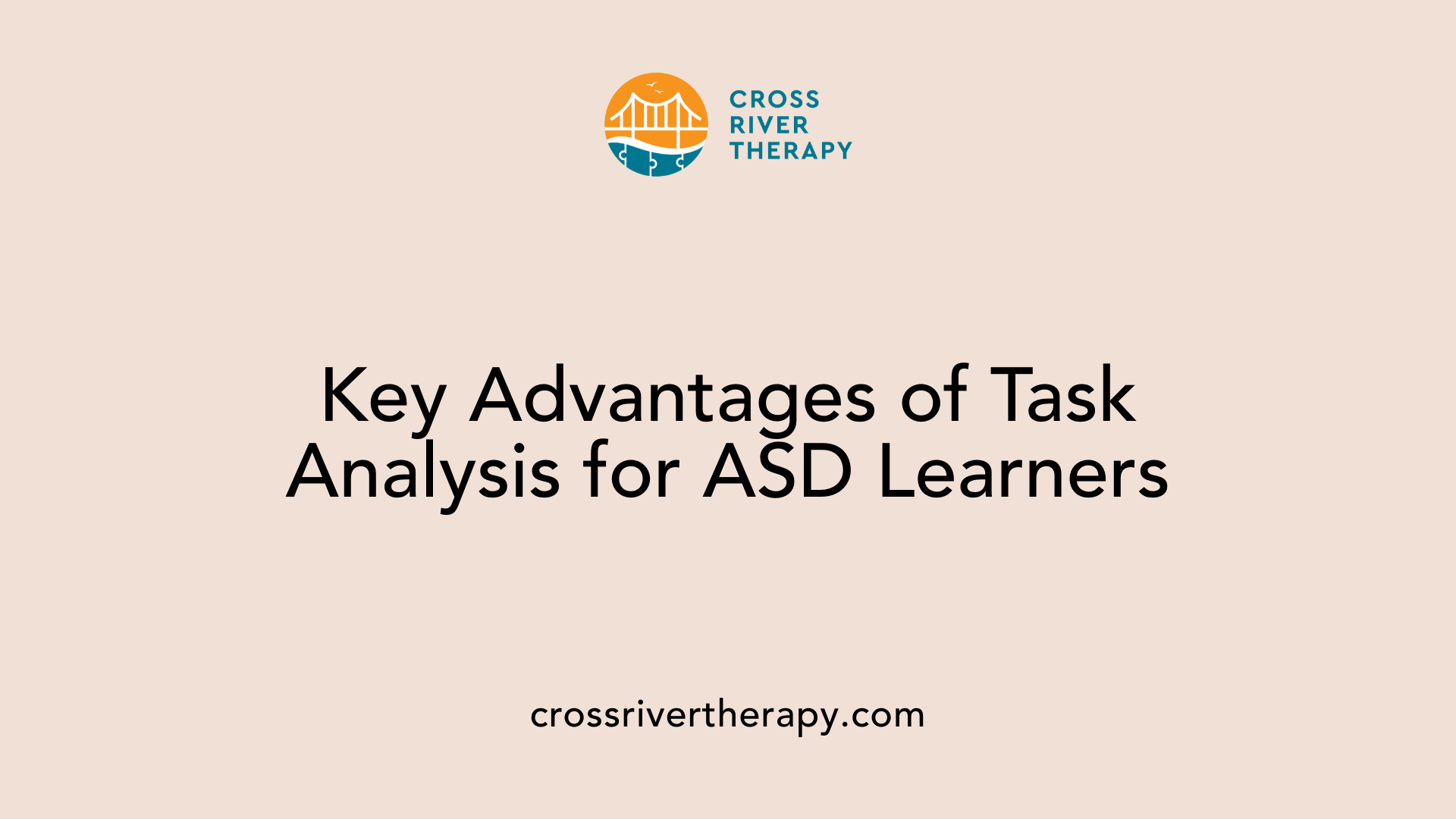
How does task analysis benefit individuals with Autism Spectrum Disorder (ASD)?
Task analysis significantly supports individuals on the autism spectrum by simplifying complex tasks into smaller, digestible steps. This approach is especially beneficial for learners who might feel overwhelmed by instructions that are too abstract or convoluted. The systematic breakdown not only makes learning more accessible, but also facilitates retention and generalization of skills across different settings.
Key benefits include:
Skill Acquisition and Independence: By focusing on individual components of a task, individuals can master necessary skills like brushing their teeth, dressing, or turning in homework, thereby enhancing their independence.
Evidence-Based Practice: Research supports task analysis as an effective educational strategy. It has been shown to improve communication skills, foster appropriate behaviors, and boost engagement levels in academic environments for children with ASD.
Anxiety Reduction: The structured nature of task analysis allows learners to approach new tasks with confidence. By knowing exactly what steps to take, students can experience less anxiety and frustration during task performance. Each successfully mastered step builds confidence, making it easier to tackle subsequent challenges.
This comprehensive approach to teaching daily living skills, academic tasks, and social interactions empowers individuals with ASD to gain vital skills while also reducing anxiety related to learning new activities.
Task Analysis in Supporting Skill Generalization
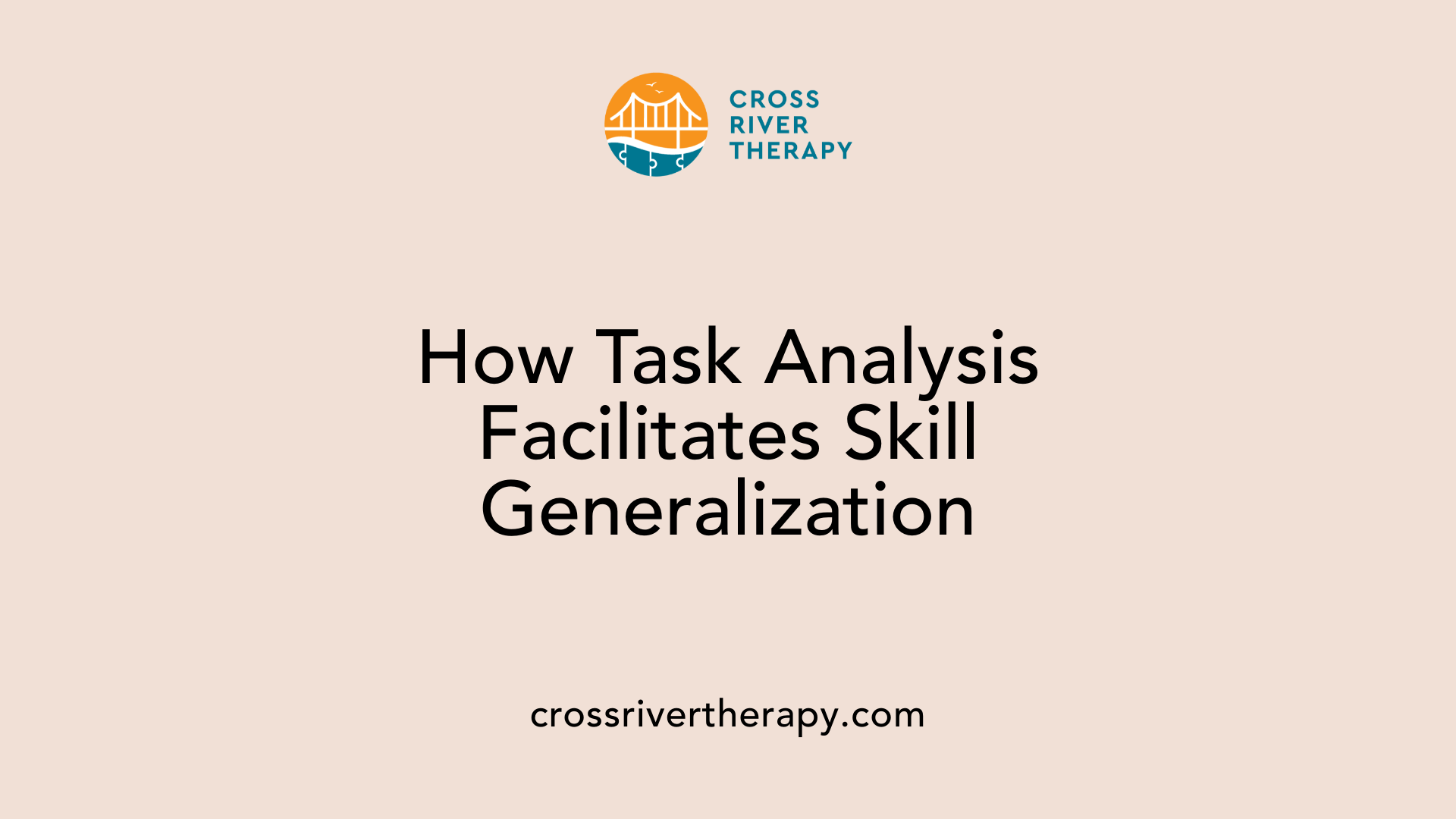
What role does task analysis play in supporting generalization?
In ABA therapy, task analysis is vital for promoting skill generalization among learners, particularly those with autism spectrum disorder (ASD). By breaking complex tasks into smaller, manageable components, task analysis allows individuals to master each step before moving on to the next. This approach not only reduces anxiety but also builds confidence as learners see progress in their abilities.
Supporting generalization in various contexts
Task analysis supports generalization by ensuring that learners practice skills in diverse settings. For example, teaching a daily living skill like brushing teeth can involve practicing in the classroom, at home, or even during social activities. Each context reinforces behavioral patterns and ensures that skills transfer from one environment to another.
Practical applications of task analysis
Some practical applications of task analysis include teaching skills such as:
- Brushing Teeth: Steps include gathering materials, applying toothpaste, and brushing, ensuring mastery of each component.
- Tying Shoes: Breaking down the process into parts such as holding laces, crossing them, and making loops.
- Turning in Assignments: Outlining steps involved in understanding assignment requirements and submitting work.
Role in ABA
In summary, task analysis enhances learning in ABA therapy by providing structured instruction and individualized learning experiences. By consistently applying task analyses across various situations, learners can achieve greater independence and improved quality of life. Data collection assists in tracking progress, ensuring tailored support for each learner’s journey.
Practical Examples of Task Analysis in ABA
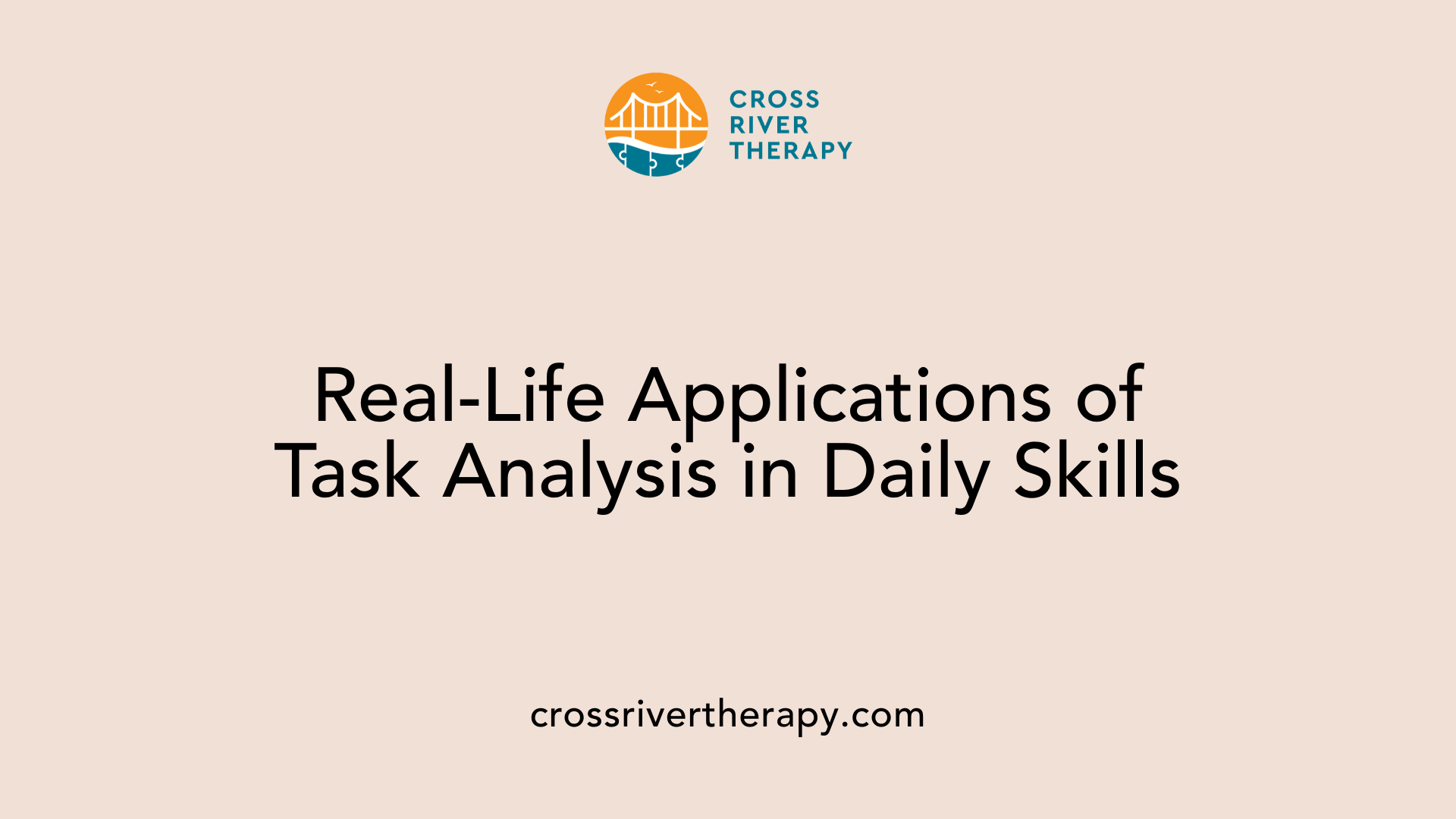
Daily Living Skills
Task analysis is frequently applied to teach daily living skills, essential for fostering independence in individuals with autism spectrum disorder (ASD). For example, when teaching the skill of brushing teeth, the task analysis might consist of the following steps:
- Gather materials: Collect the toothbrush and toothpaste.
- Apply toothpaste: Squeeze a small amount of toothpaste onto the toothbrush.
- Brush front teeth: Brush the front teeth in a circular motion.
- Brush back teeth: Brush the back teeth thoroughly.
- Rinse mouth: Rinse the mouth with water.
- Put away toothbrush: Store the toothbrush in its designated place.
Using visual aids can reinforce understanding and memory, ensuring a smoother learning experience.
Academic Tasks
Task analysis can also be beneficial for academic tasks. For instance, when teaching a child how to turn in an assignment, the steps may include:
- Locate the assignment: Find the completed assignment in their folder.
- Check the rubric: Review grading criteria to ensure all requirements are met.
- Submit electronically or physically: Decide on submission method—either upload via a platform or hand it to the teacher.
- Confirm submission: Ensure the submission has gone through successfully (in case of electronic submission).
Breaking these steps down supports comprehension and helps reduce anxiety related to academic expectations.
Application in ABA Programs
Task analysis is implemented in ABA programs to provide tailored instruction, addressing the unique strengths and needs of each learner. By breaking down complex tasks into manageable steps, ABA practitioners can monitor progress effectively through data collection methods, adjusting teaching strategies as needed.
Through techniques like forward chaining, backward chaining, and total task presentation, learners receive support specific to their abilities. This structured approach enhances learning, promotes confidence, and ultimately leads to greater independence for individuals with ASD.
Conclusion
Task analysis is a cornerstone of effective ABA therapy, particularly for individuals with ASD. By breaking down complex tasks into manageable steps, it facilitates learning, independence, and confidence. The technique's structured approach is underpinned by various methods such as forward and backward chaining, allowing for tailored instruction and enhanced skill acquisition. Its utility goes beyond simple task completion, aiding individuals in generalizing skills across contexts and settings. As ABA therapy continues to evolve, task analysis remains an indispensable tool in creating comprehensive, individualized interventions that promote long-term success and improved quality of life for participants.
References
- Applied Behavior Analysis: The Role of Task Analysis and Chaining
- Task Analysis in ABA Therapy: Strategies and Examples
- What is Meant by Task Analysis in Applied Behavior Analysis?
- How Task Analysis Benefits Skill Acquisition in ABA Therapy
- The Role of Task Analysis in ABA Therapy - ABATherapistJobs.com
- ABA Task Analysis - Blue Bird Day
- Task Analysis in ABA Therapy: Strategies and Examples
- Applied Behavior Analysis: The Role of Task Analysis and Chaining
- Task Analysis and Task Chaining Procedures | ABA Exam Review



